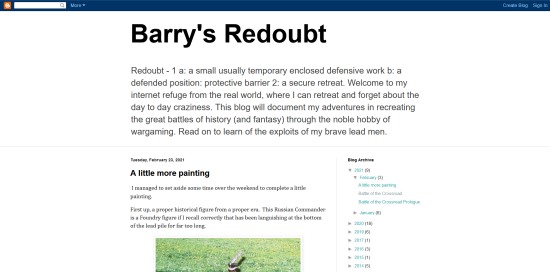I don't remember the exact path we followed, so what I'll do instead is follow the path a miniature takes when it arrives at Reaper.
The greens come into a small office located out near the loading dock. (No, I don't think they are packed in wooden crates for protection during shipping.) There, one of the Reaper employees looks the green over, and ensures that it meets the design specifications or artwork sent to the sculptor. The employee makes a mold out of it, and pours the initial sets of metal masters. These are then sent next door to the moldmaking area. The greens are returned to the sculptor.

The moldmaker had been admitted to the hospital, so Al was taking up the slack throughout the Con. The picture above shows him setting up a mold for a run through the vulcanizer. The circular metal piece underneath Al's hands contains the bottom half of a mold. Surprising to me was the fact that the mold rubber is similar to that used in automobile tires. The top half of the mold is lying to Al's left on the table.

I always thought that the alignment of miniatures in a mold was a science unto itself. The process Al was using was decidedly simpler. As you can see, he made a judgment about how the miniature would best be molded, but doesn't do any fancy cutting before placing the figures in the mold. After the masters are in the mold, rounded nuts are laid along the perimeter of the mold, so the mold can be aligned once it is passed over to the casters. Once the top is put on and hammered into place, the mold is taken to the vulcanizers - along the wall directly behind the moldmaker.

The picture above shows one of the banks of vulcanizers. Each can handle only one mold at a time, and the temperatures and pressures the vulcanizers develop are substantial. After the mold has been melted, smushed, and packed, it is pulled from the vulcanizer, and the moldmaker uses something like a crowbar to get the metal end-pieces off of the mold.










